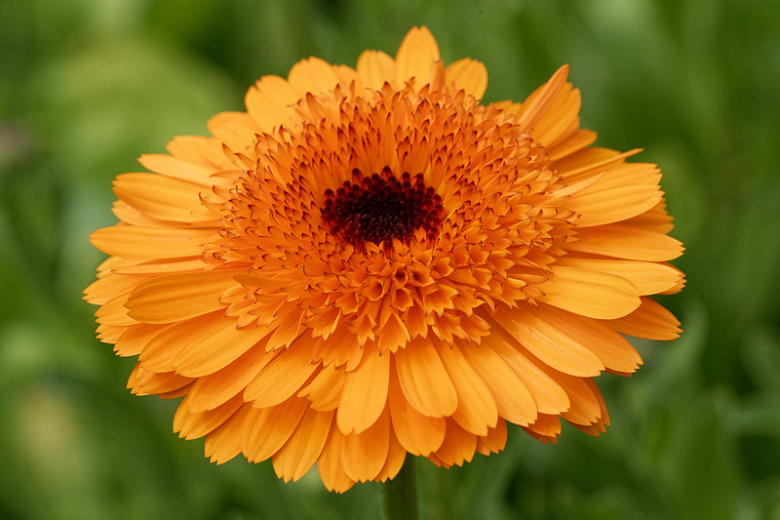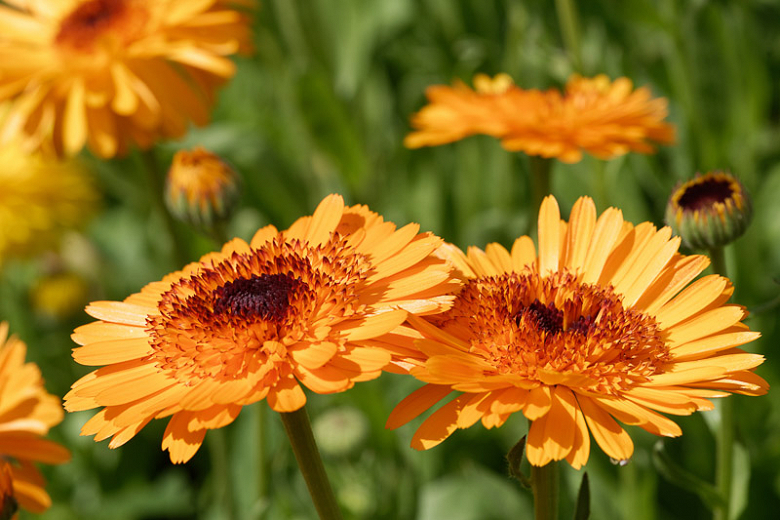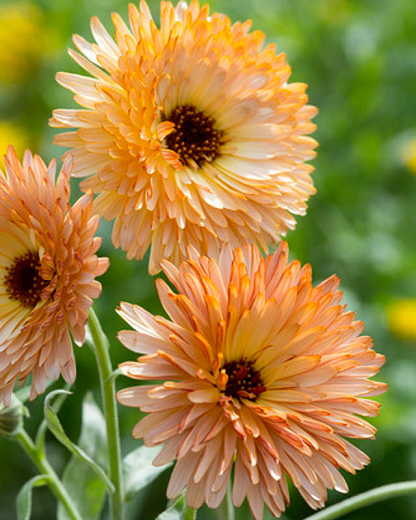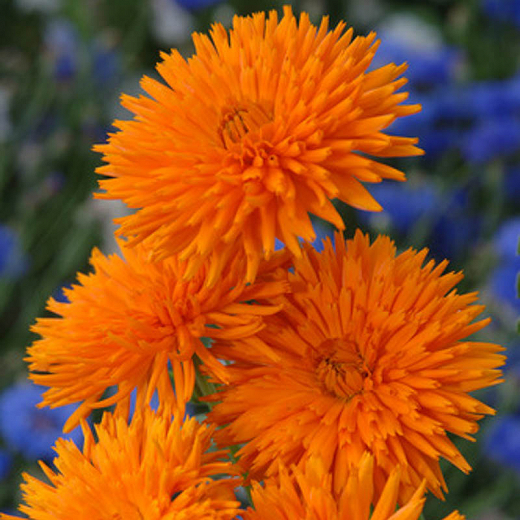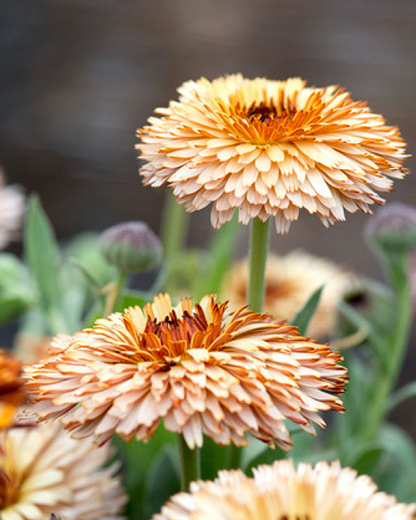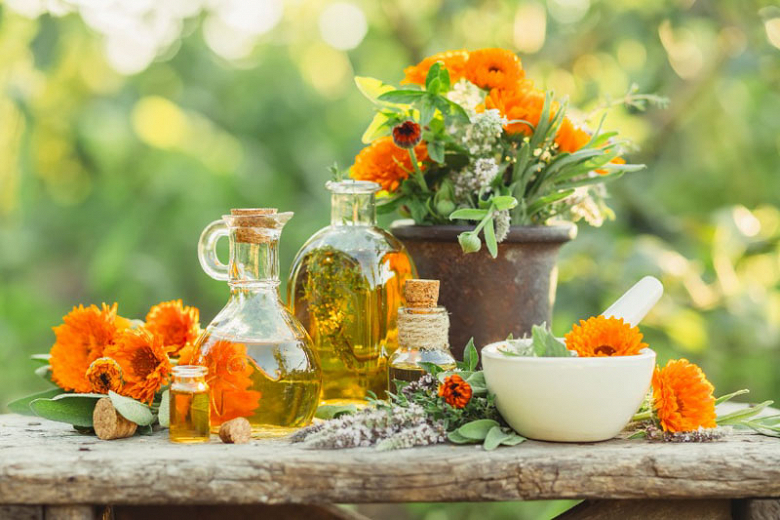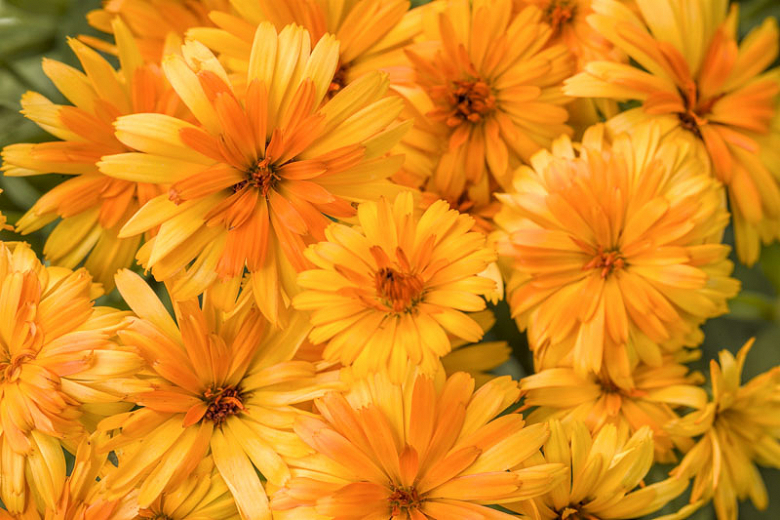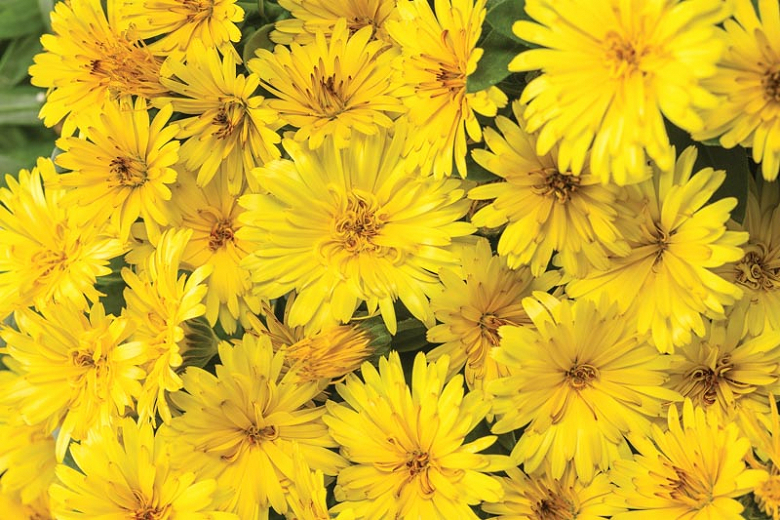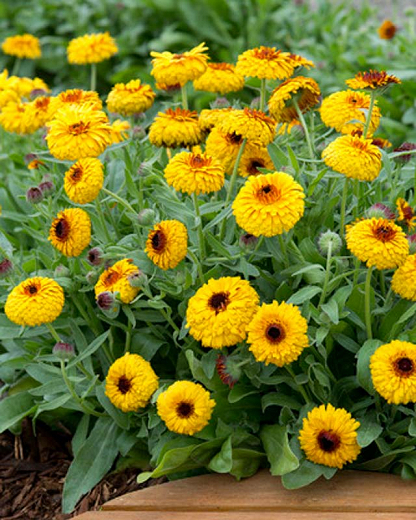Calendula officinalis Crown Orange (Pot Marigold)
Noted for its crested flowers, Calendula officinalis ‘Crown Orange’ (Pot Marigold) is a compact, bushy annual with aromatic, dark green foliage and large, vibrant orange, anemone-type flowers, 3-4 in. across (8-10 cm) with dark centers. Blooming from late spring until the first frost, Pot Marigold is easy to grow and maintain. It has a wide range of uses and every garden should have Calendula in it.
Noted for its crested flowers, Calendula officinalis 'Crown Orange' (Pot Marigold) is a compact, bushy annual with aromatic, dark green foliage and large, vibrant orange, anemone-type flowers, 3-4 in. across (8-10 cm) with dark centers. Blooming from late spring until the first frost, Pot Marigold is easy to grow and maintain. It has a wide range of uses and every garden should have Calendula in it.
- Grows up to 16-20 in. tall (40-50 cm) and 8-10 in. wide (20-25 cm). Pot Marigold will self-seed if not deadheaded, without becoming invasive.
- Performs best in full sun in a light, poor to moderately fertile, well-drained soil. Some afternoon shade is tolerated in hot summer areas. Because Calendula are cool-season flowers, they often sulk when summer sets in, especially in hot-weather areas.
- Water regularly until the plants are established. Mature plants thrive on only occasional watering. Drought tolerant once established.
- Pot Marigold is a great choice for beds and borders, edgings, as a ground cover, or in mass plantings. It is also suitable for cut flower gardens and containers and looks great in the cottage garden.
- Calendula is a wonderful companion plant in the garden. Butterflies, bees, and other pollinators and beneficial insects are drawn to the flowers, making them a useful addition to the vegetable garden.
- In addition, Calendula is a trap crop, trapping pests such as aphids, whiteflies, and thrips by exuding a sticky sap (resin) that they find more appealing and delicious than nearby vegetable crops.
- Calendula flowers can be harvested to make brightly colored bouquets. They can be used as a medicinal herb as they possess wound-healing and local anti-inflammatory properties.
- The leaves and petals of this plant are edible. The leaves are often added to salads and the fresh petals can be used as a garnish or seasoning.
- Seeds can be sown directly in the garden just before the last frost date, but for earlier bloom start seeds indoors about 6-8 weeks before the last frost. Successive sowings will provide fresh, blooming plants throughout the season.
- If flowering performance dwindles in midsummer, cut back severely.
- Young plants may be pinched back to encourage compact bushy growth. Deadhead spent flowers to promote additional bloom. Cut back to ground level after flowering.
- Few insects or diseases bother Pot Marigolds. Keep an eye out for aphids, powdery mildew, and occasional cucumber mosaic virus. Deer and rabbits tend to avoid Calendula.
- Calendula officinalis is native to Southern Europe.
Requirements
| Hardiness | 2 – 11 |
|---|---|
| Heat Zones | 1 – 6 |
| Climate Zones | 1, 1A, 1B, 2, 2A, 2B, 3, 3A, 3B, 4, 5, 6, 7, 8, 9, 10, 11, 12, 13, 14, 15, 16, 17, 18, 19, 20, 21, 22, 23, 24, A2, A3, H1 |
| Plant Type | Annuals, Herbs |
| Plant Family | Calendula – Pot Marigold |
| Exposure | Full Sun, Partial Sun |
| Season of Interest | Spring (Late)Summer (Early,Mid,Late)Fall |
| Height | 1' – 2' (30cm – 60cm) |
| Spread | 8" – 10" (20cm – 25cm) |
| Spacing | 10″ (25cm) |
| Water Needs | Average |
| Maintenance | Low |
| Soil Type | Chalk, Loam, Sand |
| Soil pH | Acid, Alkaline, Neutral |
| Soil Drainage | Well-Drained |
| Characteristics | Dried Arrangements, Cut Flowers, Showy |
| Tolerance | Deer, Rabbit |
| Attracts | Bees, Butterflies |
| Garden Uses | Beds and Borders, Edging, Ground Covers, Patio and Containers |
| Garden Styles | City and Courtyard, Informal and Cottage, Traditional Garden |
